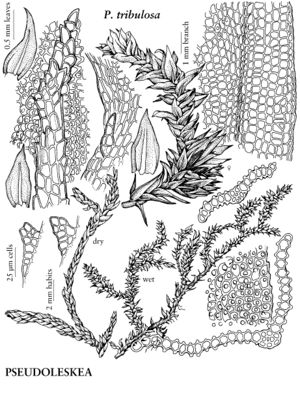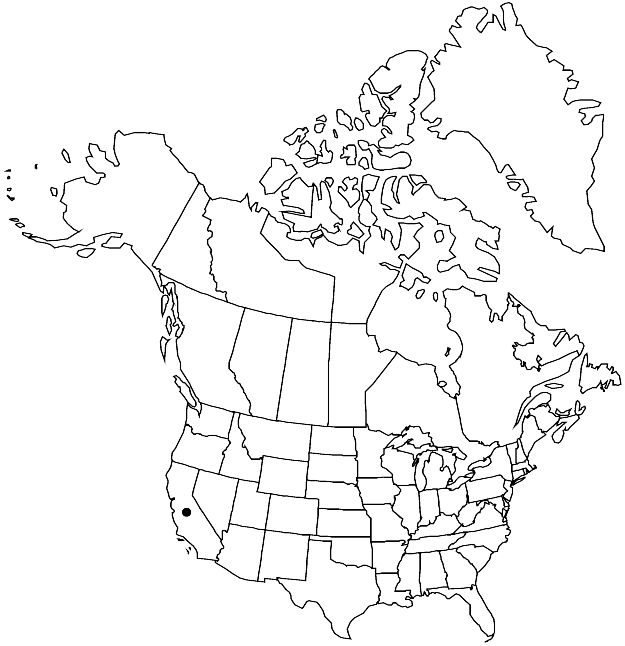Pseudoleskea tribulosa
Bryologist 112: 184, figs. 1 – 14. 2009.
Plants small, in thin mats, dark green or olive green. Stems with branches slender, not julaceous, apices rarely curving up; central strand present; paraphyllia many, foliose, not branched. Leaves catenulate, weakly incurved when dry, erect-spreading when moist, dull, oblong-ovate, ± symmetric, not falcate, 0.6–0.9 mm; margins plane; apex gradually acute to broadly acuminate, hair-point absent; costa not reaching acumen to subpercurrent, green to orange-green, not sinuate, terminal abaxial cells projecting and strongly dentate in Morningstar-shaped pattern; alar cells quadrate to transversely elongate, region large; medial laminal cells quadrate to isodiametric, to 10 µm, 1:1, pellucid, strongly mammillose-papillose over lumen or rarely off-centered, papillae often with apical cell pointed, covering most of lumen, walls incrassate, not pitted; proximal juxtacostal cells usually shorter than medial, walls pitted or not. Capsule unknown.
Habitat: Shaded metamorphosed limestone overhangs and boulders
Elevation: high elevations (2600-2900 m)
Discussion
Pseudoleskea tribulosa is a rare, distinctive endemic species only known from a few sites in the subalpine zone of Yosemite National Park; the plants seem to favor deeply shaded sites such as the mouths of caves or deep overhangs. The combination of small catenulate leaves with weak or absent plicae, plane margins, large central papilla of laminal cells with projecting apical salient, and odd extended apical cell walls of the abaxial costa are diagnostic. The species seems to be closest to 4. P. patens (see the differences under that species). Only male plants are known.
Selected References
None.

